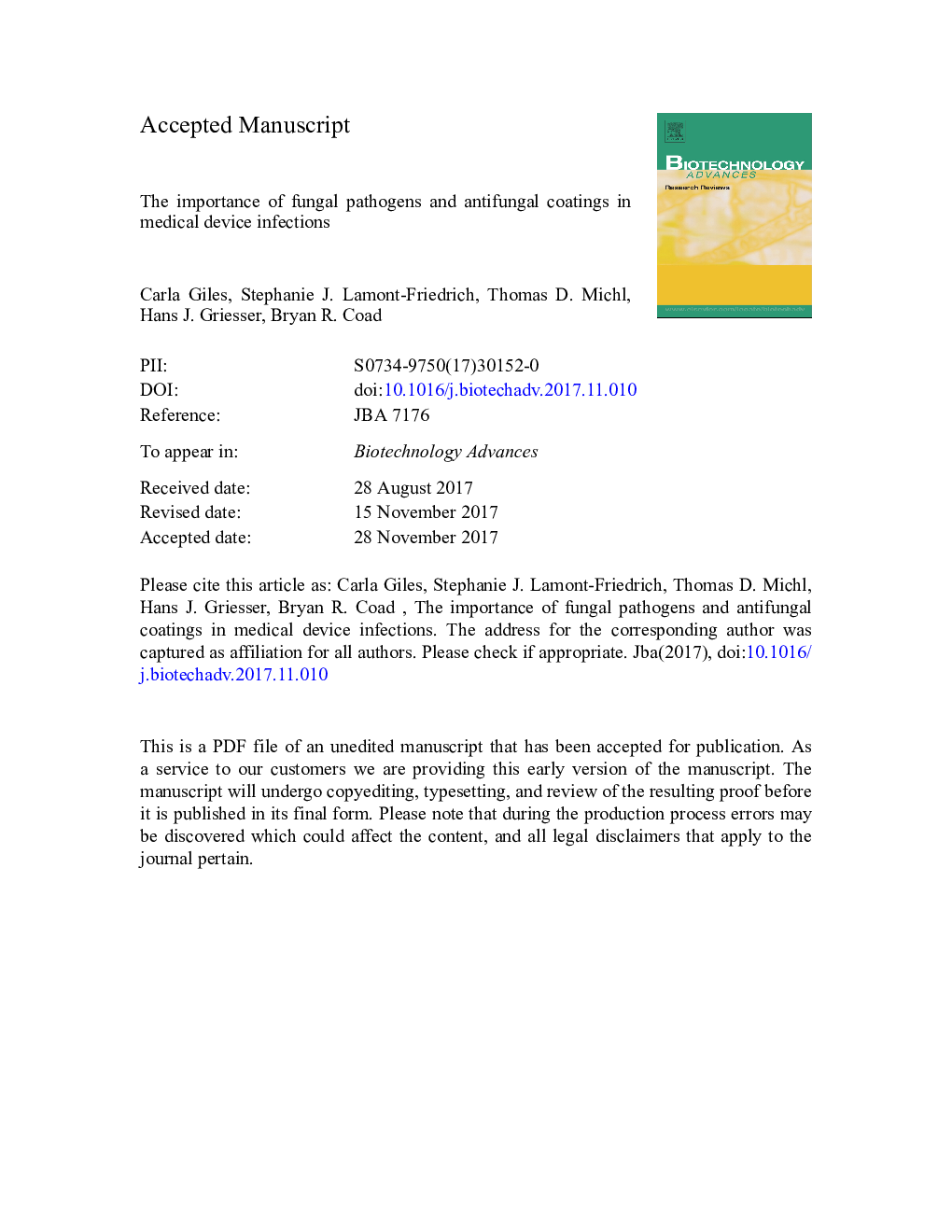| Article ID | Journal | Published Year | Pages | File Type |
|---|---|---|---|---|
| 6486683 | Biotechnology Advances | 2018 | 47 Pages |
Abstract
However, fungi being eukaryotes, the challenge is greater than for bacterial infections because antifungal agents are often toxic towards eukaryotic host cells. Whilst there is extensive literature on antibacterial coatings, a far lesser body of literature exists on surfaces or coatings that prevent attachment and biofilm formation on medical devices by fungal pathogens. Here we review strategies for the design and fabrication of medical devices with antifungal surfaces. We also survey the microbiology literature on fundamental mechanisms by which fungi attach and spread on natural and synthetic surfaces. Research in this field requires close collaboration between biomaterials scientists, microbiologists and clinicians; we consider progress in the molecular understanding of fungal recognition of, and attachment to, suitable surfaces, and of ensuing metabolic changes, to be essential for designing rational approaches towards effective antifungal coatings, rather than empirical trial of coatings.
Keywords
Related Topics
Physical Sciences and Engineering
Chemical Engineering
Bioengineering
Authors
Carla Giles, Stephanie J. Lamont-Friedrich, Thomas D. Michl, Hans J. Griesser, Bryan R. Coad,
